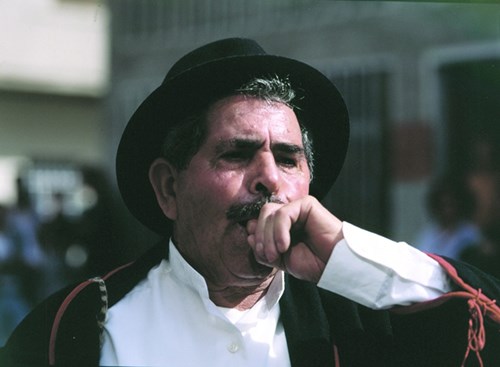The Silbo Gomero is a whistled language characteristic of the island of La Gomera used to communicate over long distances. Declared intangible cultural heritage by UNESCO on 30 September 2009 has become a hallmark of La Gomera and around the Canary Islands.
It is an articulate language, which reproduces by whistling the characteristics of a spoken language in this case, plays the Castilian spoken in the Canary Islands. Uses six sounds, two of them referred to as vowels (acute and severe) and the other four as consonants, being able to express more than 4,000 concepts or words. It is produced by introducing in the mouth, one or two fingers of each hand in different positions. When contacting the gomeros by the whistle, it can be seen that let print the same speech.
Its use dates back to pre-conquest times, being spoken by aboriginals in other islands such as El Hierro, Tenerife and Gran Canaria, surviving until today only on the island of La Gomera. In the sixteenth century, after the conquest of the Canaries, the last Guanche adapted to Castilian language whistling while the original language, Guanche language was fading.

As for its origin, the hypothesis of its African origin seems the most successful, the English traveler Salmer Brown in his book MADEIRA, CANARY ISLANDS AND AZORES, London 1913, claimed to have heard a similar procedure like Silbo Gomero in one of the tribes Atlas.
The landscape of La Gomera is closely related to survival whistle on this island. The abrupt orography, characterized by a very high semimeseta in the center and numerous ravines that descend from it to the sea, opening in valleys ... made communications difficult. The depth and distance between ravines facilitated therefore the appearance of this leguaje, because for access to another hamlet, located a few kilometers in a straight line it was necessary to descend and ascend cliffs for hours. The whistle, became the best solution to alleviate the isolation.
Although the main function of this language is to allow communication between people who are at a great a distance from one another, it characterized therefore as a social language, for collective use, sometimes it came to be used as a secret language during the conquest, wars and even for smuggling.
For centuries, transmission silbo took place in the family, but the mid-twentieth century, improved communications, the decline of grazing and the disappearance of arable land, placed the whistle on the brink of extinction. Currently, and as a measure of preservation, it is taught in all schools of the island in Elementary and Secondary Education.
Numerous writers throughout history have referred to the Silbo Gomero. The French monks Jean Pierre Le Verrier and Boutier fifteenth century, authors of the French chronicles of the conquest of the Canaries titled as "Le Canarien", claimed that the inhabitants of La Gomera spoke "as if they hadn´t tongue".
Today, the silbo is used in all kinds of celebrations and festivals both civil and religious, being essential in the "downs" (processions dedicated to the Virgin or patron saints of the municipalities.
This language has been and remains the subject of numerous investigations, in particular, a study by researchers at the University of La Laguna in 2005, has shown that speakers of Silbo process language in your brain in the same way that a language spoken, using the same language areas of the brain used to process Castilian phrases, while those who do not speak silbo process it simply as a whistle.
Our hotel, aware of the cultural importance of this whistled language, offers shows Silbo Gomero in its facilities, thus contributing to the survival of this ancient mode of communication, may also often a demonstration of Silbo Gomero in the restaurant Mirador de Abrante.

